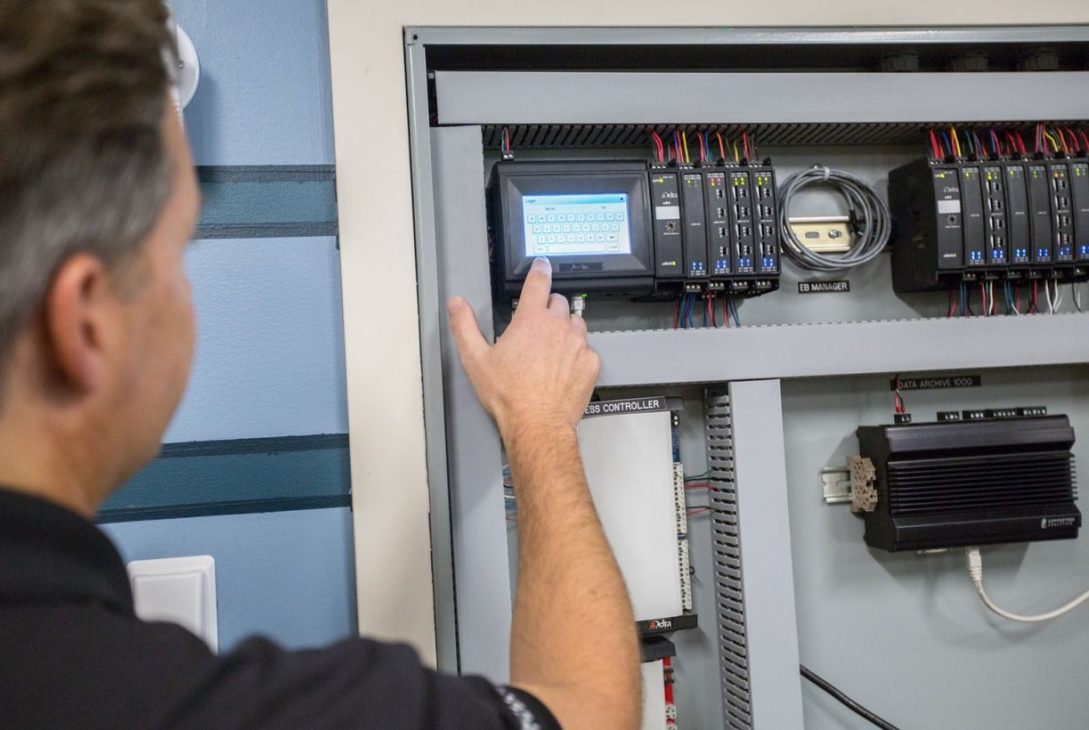In today’s rapidly advancing technological landscape, the implementation of Direct Digital Control (DDCs) in commercial buildings is revolutionizing energy management and driving significant cost savings. As the demand for smarter, more efficient building systems grows, understanding the role and benefits of DDCs becomes increasingly important. This comprehensive guide delves into the world of Direct Digital Controls, exploring their impact on energy management, cost savings, and overall building automation.
What are Direct Digital Controls?
Direct Digital Controls (DDCs) refer to the automated control of a building’s various systems through digital processing. These systems include heating, ventilation, and air conditioning (HVAC), lighting, security, and other building operations. DDCs utilize sensors, controllers, and software to monitor and adjust the performance of these systems in real time, ensuring optimal efficiency and comfort.
Key Components of Direct Digital Controls
- Sensors: These devices collect data on various environmental conditions such as temperature, humidity, and occupancy levels.
- Controllers: These are the brains of the DDC system, processing data from sensors and making real-time adjustments to maintain desired conditions.
- Software: This is used to program and manage the DDC system, providing a user-friendly interface for monitoring and controlling building operations.
Benefits of Direct Digital Controls
Enhanced Energy Management
One of the most significant advantages of Direct Digital Controls is their ability to enhance energy management. By continuously monitoring and adjusting building systems, DDCs ensure that energy is used efficiently, reducing waste and lowering utility bills. For instance, HVAC systems equipped with DDCs can adjust heating and cooling based on occupancy patterns, outdoor weather conditions, and specific zone requirements. This precise control minimizes energy consumption while maintaining a comfortable indoor environment.
Significant Cost Savings
The efficient energy management provided by DDCs translates directly into cost savings. By optimizing the performance of HVAC, lighting, and other systems, DDCs can significantly reduce energy consumption and, consequently, utility costs. Additionally, DDCs can help extend the lifespan of building equipment by reducing wear and tear, leading to lower maintenance and replacement costs over time.
Improved Building Automation
DDCs are a cornerstone of modern Building Automation Systems (BAS). These systems integrate various building operations, allowing for centralized control and monitoring. With DDCs, building managers can automate routine tasks, such as adjusting lighting based on occupancy or scheduling HVAC operations based on occupancy and usage patterns. This not only enhances operational efficiency but also frees up staff to focus on more critical tasks.
Applications of Direct Digital Controls
Traffic Control Systems and Intelligent Transportation Systems
While primarily associated with building automation, DDCs also play a crucial role in traffic control systems and intelligent transportation systems. These systems rely on real-time data to manage traffic flow, reduce congestion, and improve overall transportation efficiency. DDCs enable precise control of traffic signals, dynamic message signs, and other transportation infrastructure, contributing to safer and more efficient roadways.
Stand-alone Controls and Building Automation
DDCs can operate as stand-alone controls or as part of an integrated building automation system. Stand-alone controls are ideal for smaller facilities or specific applications where full BAS integration may not be necessary. These controls can manage individual systems, such as lighting or HVAC, providing targeted energy management and cost savings. In larger buildings or complexes, DDCs can be integrated into a comprehensive BAS, offering centralized control and monitoring of all building systems.
VAV Controllers and BEMS Controllers
Variable Air Volume (VAV) controllers and Building Energy Management System (BEMS) controllers are key components of DDC systems. VAV controllers regulate the flow of air within HVAC systems, adjusting ventilation based on real-time demand. This ensures optimal indoor air quality and energy efficiency. BEMS controllers, on the other hand, oversee the overall energy performance of a building, integrating data from various systems to provide a holistic view of energy consumption and efficiency.
Implementing Direct Digital Controls in Commercial Buildings
Assessing Building Needs
The first step in implementing DDCs is to assess the specific needs of the building. This involves evaluating the current building systems, identifying areas for improvement, and determining the potential benefits of DDC implementation. Key considerations include the size and complexity of the building, existing automation systems, and energy consumption patterns.
Selecting the Right DDC System
Choosing the right DDC system is crucial for achieving optimal results. Factors to consider include the system’s compatibility with existing building infrastructure, ease of integration, and scalability. It’s also important to select a system that offers robust data analytics and reporting capabilities, enabling building managers to make informed decisions and continuously optimize performance.
Installation and Integration
Once the appropriate DDC system has been selected, the next step is installation and integration. This process involves installing sensors, controllers, and other hardware, as well as configuring the software to meet the building’s specific requirements. Integration with existing building systems, such as lighting, HVAC, and security, is also essential to ensure seamless operation and centralized control.
Ongoing Management and Optimization
After installation, ongoing management and optimization are key to maximizing the benefits of DDCs. This includes regular maintenance, software updates, and performance monitoring. Building managers should utilize the data and insights provided by the DDC system to identify opportunities for further energy savings and operational improvements.
The Future of Direct Digital Controls
As technology continues to advance, the capabilities of Direct Digital Control are expected to expand even further. Emerging trends such as the Internet of Things (IoT), artificial intelligence (AI), and machine learning are poised to enhance the functionality and effectiveness of DDC systems. These advancements will enable even greater levels of automation, energy efficiency, and cost savings, solidifying the role of DDCs as a critical component of modern building management.
Conclusion
Direct Digital Controls are transforming the way commercial buildings manage energy and costs. By providing precise, real-time control of building systems, DDCs enhance energy efficiency, reduce utility bills, and improve overall building automation. Whether used in stand-alone applications or as part of an integrated building automation system, DDCs offer significant benefits for building owners, managers, and occupants alike. As technology continues to evolve, the future of DDCs looks bright, promising even greater advancements in energy management and cost savings.
Read More: Direct Digital Controls Enhancing Energy Management and Cost.




